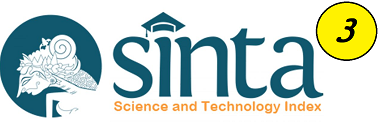Study On Early Warning Systems (EWS) for Indonesia Digital Terrestrial Television
Abstract
Early warning system (EWS) via digital television (TV) in Indonesia is still un-optimal in design and implementation due to the absent of clear standard/guidance to follow across the country. This paper studies various EWS based on digital TV of Japan, Korea, and the United States of America (USA). Although the systems look like different, the EWS can be simplified into 3 nodes representing (i) Emergency Agency, (ii) TV broadcaster, and (iii) TV receiver. Beside the 3-node-based EWS, this paper evaluates the possibilities of EWS having 4 nodes. We perform computer simulations to evaluate the latency and bit error rate (BER) performances under additive white Gaussian noise (AWGN) and frequency-flat Rayleigh fading channels. We found that the system latency and BER performances of EWS are highly affected by (i) the distance of one node to another and (ii) the number of nodes, where EWS with 3 or 4 nodes found to be enough and suitable for Indonesia digital TV. We propose a criterion of good EWS, i.e., total delay T <= t + 4.delta.t with t and delta.t being the propagation delay and processing time, respectively, and BER less than Pb=10-3. The result of this paper are expected to be used as a reference for the Indonesia EWS systems.
Downloads

This work is licensed under a Creative Commons Attribution-NonCommercial 4.0 International License.



















